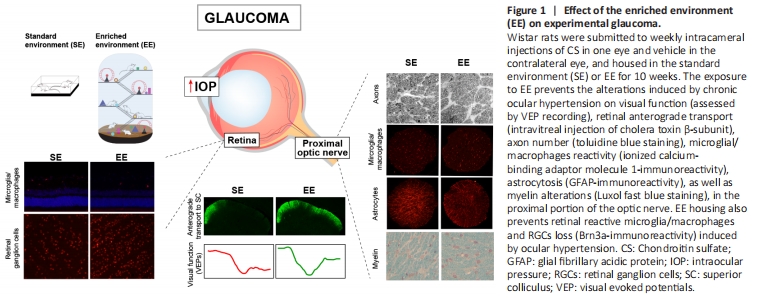视神经损伤
-
Figure 1 | Effect of the enriched environment (EE) on experimental glaucoma.

As already mentioned, oxidative damage, excitotoxicity, decreased neurotrophins, and glial alterations play key roles in glaucoma pathogenesis. Based on the evidence supporting the antioxidant, antiinflammatory, and pro-BDNF properties of EE housing, together with its effect against glutamate toxicity, we have studied the therapeutic effect of exposure to EE in an experimental model of glaucoma (González Fleitas et al., 2020b). For this purpose, male Wistar rats in which one eye received weekly intracameral injections of CS were housed in SE or EE for 10 weeks, as shown in Figure 1. Flash VEPs are clinically used to analyze different ophthalmologic diseases, as an index of the visual function from the retina to the visual cortex. Concomitantly with data from human and experimentally induced glaucoma (Belforte et al., 2010; Hines-Beard et al., 2016; Jha et al., 2017), CS-induced ocular hypertension provokes a decrease in VEPs, which is prevented by EE housing (Figure 1). Evidence supports the axonal compartment as a preference location of glaucomatous alterations, and a misconnection between the retina and its primary central targets has been shown in different glaucoma models (Crish et al., 2010; Bordone et al., 2017), and histological changes and metabolic adaptations add to glaucomatous damage susceptibility (Yang et al., 2018; Cooper et al., 2020).